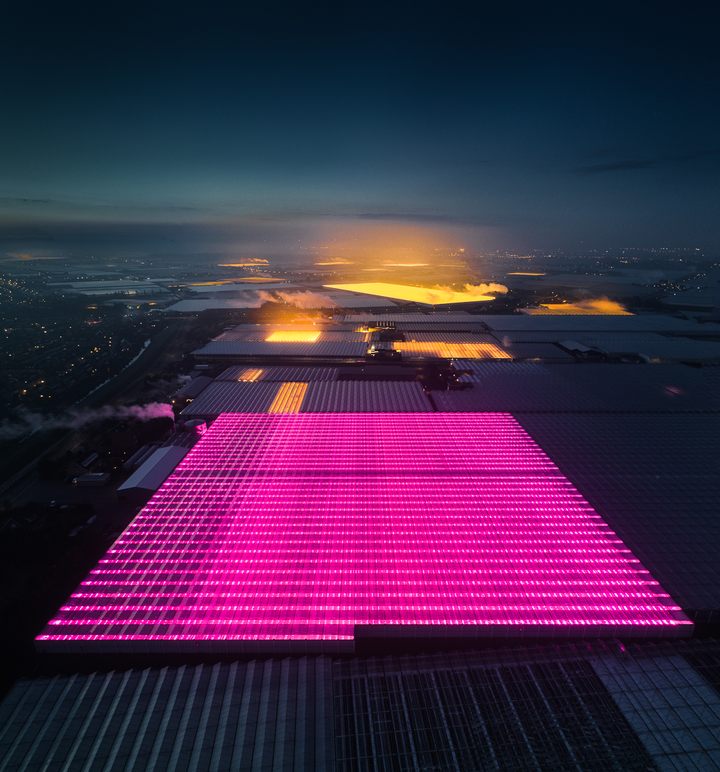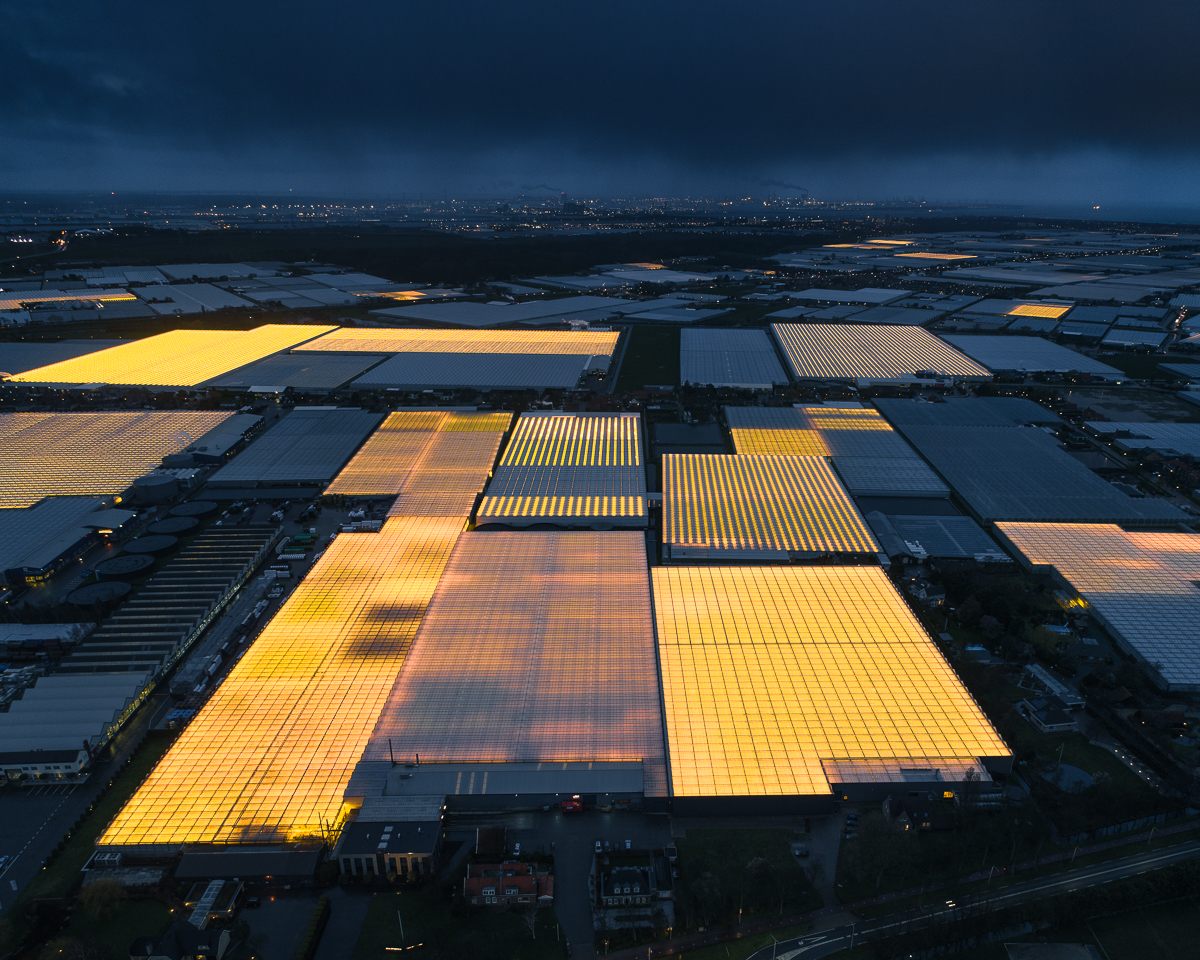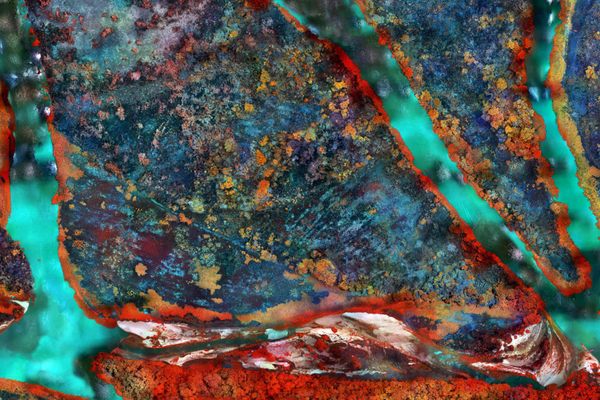
Glowing Dutch Greenhouses, As Seen From Way Up High
Photographer Tom Hegen captures a bird’s eye view of the future.
In the dim of night, a mosaic of neon-colored rectangles glow like a disco dance floor. This patchwork of yellows, and sometimes purple-pinks, are modern greenhouse complexes sprawled across the countryside of the Dutch province of South Holland, equipped with LED lights that boost year-round growth of crops of fruits and vegetables. Tom Hegen, a German photographer whose aerial photography projects show the impact of human intervention on Earth, captured expansive views of these climate-controlled farms from more than 1,500 feet in the air, out the open door of a chartered helicopter.
The Netherlands is a small country by size, but is huge when it comes to agricultural exports—second in the world behind the United States, by some counts. Indoor agriculture—forever altered by energy-efficient LEDs that can produce parts of the light spectrum most helpful and attractive to plants—is a significant area of research and innovation for the industry there. “The Dutch have created the most advanced area in the world for controlled environment agriculture and have become world leaders in agricultural innovation,” says Hegen on his website. “However, there are also consequences this growing method brings with it, like light pollution.” In some places, the photographer explains, ordinances have been put in place requiring these greenhouses to use blackout screens and curtains at night.
Hegen—who is known for photos taken from great heights, including his striking series on Dutch tulip fields—discussed his inspiration and the challenges of shooting his “Greenhouse” series with Atlas Obscura.

What inspired you to photograph these greenhouses in the Netherlands? How did you discover them?
My work is based around the topic of the Anthropocene [the period during which human activity has been the dominant influence on climate and the environment]. One of the main questions that will affect our future life on Earth will be how we can feed the ever-growing world population with shrinking resources. According to the United Nations, the world’s population will grow from today’s 7.5 billion people to 10 billion in 2050. And as natural resources such as farmland and water become scarce, feeding the world will become an even greater challenge. Those indoor farms are a prototype to experiment on how to maximize the yield with little space and limited resources.

I was reading a story about food development in a science magazine and got introduced to the idea of cultivating plants in LED-lit greenhouses. I was wondering how these greenhouses may look in the dark, if they are covered, and how they integrate into the surrounding environment. All this made it appealing for me to visit the area.

What challenges did you encounter?
The lights of those greenhouses are all programmed and remote-controlled. They don’t light the entire night due to light-pollution prevention rules. It made it difficult to photograph as you could not say in advance when and where was the right spot to photograph them.
I also wanted to visit some of these greenhouses from inside, but it was kind of impossible. I went to a couple of companies, but they said that they were having a problem with a virus at this moment, so they can not let anyone inside the greenhouse, to protect the plants.
What do you hope these photos will communicate about the future of food security?
Most fruits and vegetables that we find in our supermarkets are available in enormous amounts and all year-round. This is a luxury that we take for granted. We don’t even ask where it comes from, how it grows, and what it takes to grow. A great number of tomatoes that we see in stores have never touched natural soil or rain. Showing these places makes the circle of the food supply chain more transparent. I want to sensitize the viewer to what it takes to keep our luxurious living standards. These photos are, for me, a mirror of society, economy, and technology.











Follow us on Twitter to get the latest on the world's hidden wonders.
Like us on Facebook to get the latest on the world's hidden wonders.
Follow us on Twitter Like us on Facebook